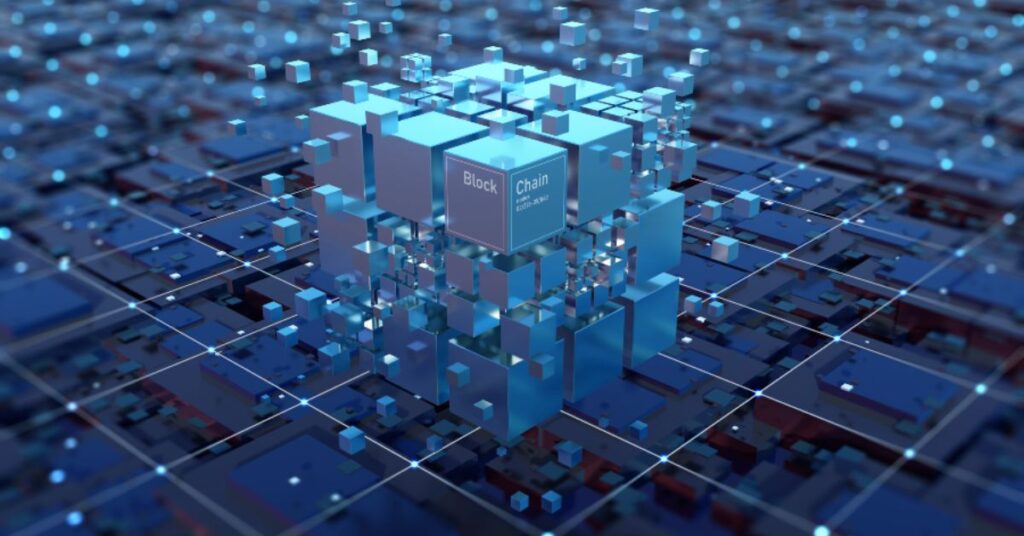What is Blockchain?-How Digital Currencies are Shaping the Future
The blockchain era, the underlying era of cryptocurrencies like Bitcoin and Ethereum, is often mentioned as one of the most critical inventions of the twenty-first century. Fundamentally, it is a decentralized database supplying opportunities for non-adjustability, safety, and data transparency.
In contrast with conventional high/low reconciliation processes performed through a locked system with only one version by an authorized third party/authority, blockchain is a decentralized network.
This article explores the complexities of blockchain technology, including its fundamental elements, features, uses, and possible effects on different industries.
Understanding Blockchain: A Simple Definition:
Blockchain is a decentralized and digital ledger technology that securely records transactions across multiple computers. This ensures that after a transaction is recorded, it cannot be altered retroactively without changing all subsequent blocks and the network consensus, making it entirely secure from fraud.
The term “blockchain” comes from the statistics structure transactions are grouped collectively in blocks, each related to the previous one, forming a “chain.” This precise shape allows blockchain to hold excessive integrity and transparency, making it an appealing answer for various packages beyond cryptocurrencies.
Critical characteristics of blockchain:
- Decentralization: No central authority on the network makes it open and almost impossible for it to be censored.
- Immutability: Transaction entries cannot be changed or deleted once entered, meaning high-security measures exist.
- Transparency: All the transactions are open on the blockchain platform, where everyone can see the transactions and be answerable.
- Security: Blockchain employs cryptography to enforce data security and avoid fraud.
The Core Components of Blockchain Technology:

The core of blockchain technology, which enables an innovative system of storing information with multiple layers, is based on several components. In its simplistic view, a blockchain is a shared ledger that records transactions in many computers that cannot be changed once completed without approval from various nodes.
1. Blocks:
A block contains a batch of transactions with a unique cryptographic hash linking to the previous block, creating an unalterable chain.
2. Distributed Ledger:
A network of nodes maintains the ledger, verifying and validating transactions through consensus mechanisms like Proof of Work or Stake.
3. Cryptography:
Public and private keys encrypt and decrypt transaction data, ensuring secure and anonymous transactions.
4. Smart Contracts:
Smart contracts are written in computer language and make contracts run independently, improving the blockchain efficacy and versatility.
How Does Blockchain Work?
Let’s first take an example to learn how the blockchain process is initiated in the cause of the financial transaction. Suppose Alice wants to send money to Bob. Here’s how the process unfolds:
- Transaction Initiation: A transaction begins with Alice ordering a particular amount to be transferred to Bob.
- Broadcasting: This transaction is broadcasted to the network, where nodes validate its authenticity.
- Validation: Nodes check if Alice has enough balance and whether the transaction meets all criteria.
- Block Creation: Once validated, the transaction is grouped into a block.
- Consensus: The new block is added to the blockchain once a consensus is reached among the nodes.
- Completion: The transaction is completed, and both Alice and Bob can view the updated balances on their respective wallets.
Blockchain Technology: A Transformative Force:
1. Finance:
- Cryptocurrencies: A blockchain feature has been incorporated by several cryptocurrencies, such as Ethereum and Bitcoin, allowing users to interact with one another with little to no involvement from outsiders. This decreases the number of transactions and seconds it takes to make payments across country borders, making this facility efficient and instant.
- Decentralized Finance (DeFi): It advances the protocol for implementing applications within the sphere of DeFi, which targets a more conventional financial segment, including lending, borrowing, and trading services, which are given in a decentralized manner. This lowers the chances of having fraudulent or manipulated results of the stock.
2. Supply Chain:
- Transparency and Traceability: With the help of an unalterable chain, the source-to-end consumer track is created from the supply chain. This keeps the genuineness of products, eliminates fraud in the supply chain, and makes other parties develop confidence in each other.
- Consumer Authentication: Consumers can authenticate the origin and journey of their purchased products, ensuring ethical sourcing and quality standards are met.
3. Healthcare:
- Secure Data Exchange: Blockchain supports secure and portable patient information sharing to maintain confidentiality while the caregivers receive comprehensive patient histories for proper diagnosis and appropriate treatment.
- Clinical Trial Data: Clinical trial results can be safely exchanged and validated, increasing the accuracy and quality of medical research.
The Expanding Use Cases of Blockchain Technology:

1. Cryptocurrency Popularity:
From the bitcoin, Ethereum, and endless variants of cryptocurrencies that have flooded our markets, cryptocurrencies remain the primary use of blockchain technology and data management. Thus, rapidly growing industries also replicate these technologies in operation but encounter problems in their work.
2. Importance of Blockchain Systems:
The increasing number and value of cryptocurrencies underscore the importance of blockchain systems, making digital currencies a mainstream phenomenon. The ongoing rush toward this cutting-edge trading technology continues to fluctuate with market trends and investor sentiment, thanks to the foundational structure provided by blockchain.
Broader Interest in Blockchain:
However, it’s more than individual investors who are enthusiastic about cryptocurrencies. There is growing interest in intelligent contract capabilities and the recognition of cryptocurrencies as legal tender.
For example, Sri Lanka’s recent adoption of Bitcoin, as highlighted in the Stanford Online webinar “The Future of Blockchain,” illustrates a significant shift toward integrating digital currencies into everyday transactions and legal frameworks.
FAQs:
1. What are smart contracts?
When specific criteria are met, smart contracts—with their terms explicitly put into code—automatically enforce and carry out agreements.
2. How does blockchain increase the supply chain system?
Blockchain offers actual-time tracking of merchandise, complements transparency, and improves trust amongst stakeholders by ensuring that transactions are recorded and demonstrated.
3. What are consensus mechanisms?
Consensus mechanisms are protocols used to validate transactions in a blockchain community, ensuring all contributors agree on the legitimacy of the statistics before adding them to the chain.
Conclusion:
Understanding blockchain and DLTs’ inner workings reveals the complexities underpinning their protection and performance. Using mechanisms like consensus and developing an immutable chain of blocks, these technologies can convert industries by ensuring transparent, honest, and verifiable data control.
Whether you’re a business proprietor, a tech enthusiast, or curious about this modern era, know-how blockchain is vital in today’s unexpectedly evolving virtual panorama.












































Post Comment